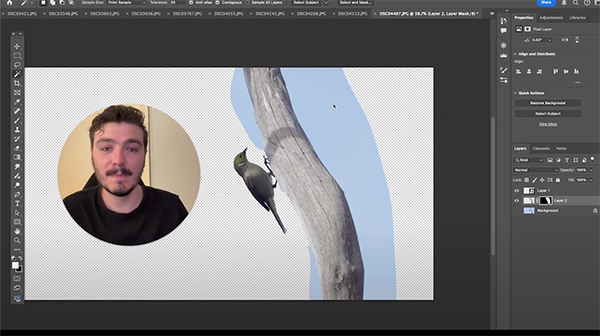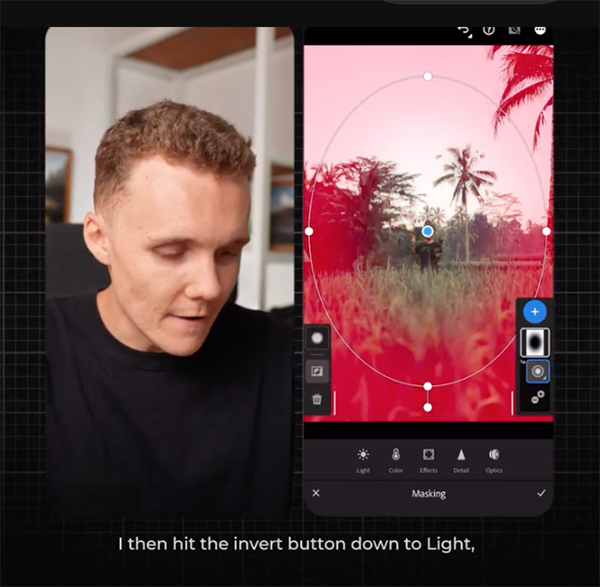Romantic tulip displays are going to be in all the chicest gardens in 2025 – these are the go-to colours and varieties to buy now
We asked garden experts for their go-to shades and styling tips
 REAL ESTATE
REAL ESTATE
 REAL ESTATE
REAL ESTATE
 REAL ESTATE
REAL ESTATE
 REAL ESTATE
REAL ESTATE
 REAL ESTATE
REAL ESTATE
 EVENT
EVENT
 LANDSCAPE
LANDSCAPE
 LANDSCAPE
LANDSCAPE
 CONCERT
CONCERT
 LANDSCAPE
LANDSCAPE
 TRAVEL
TRAVEL

REAL ESTATE
Residential, Commercial, Interiors

LANDSCAPE
Landmarks, Cityscape, Urban, Architectural

FOOD
Hotels, Restaurants, Advertising, Editorial

PORTRAIT
Traditional, Glamour, Lifestyle, Candid

PRODUCT
Studio, Lifestyle, Grouping

EVENT
Conference, Exhibition, Corporate

FASHION
Portrait, Catalog, Editorial, Street

TRAVEL
Landscape, Cityscape, Documentary

SPORT
Basketball, Football, Golf

CONCERT

STILL

STREET
Inexperienced wildlife photographers often struggle to properly expose birds, whether they’re sitting still on a tree or in flight, and underexposed subjects are the typical concern. This problem is particular acute when our feathered friends are depicted against a bright sky.
Fortunately, there’s a quick Photoshop fix as you’ll see in the video below from the Birdwatching Journals YouTube channel, and the technique is so simple that it only takes six minutes to explain. It’s all about brightening the bird and rehabilitating a background that’s overexposed.
Today’s unnamed instructor walks you through a step-by-step edit from beginning to end while providing helpful keyboard shortcuts that speed up the process. He begins by making a selection and hitting Command “C” followed by Command Shift “V.” By doing this he’s copied the bird and tree branch in the foreground of the scene.

The next step is selecting the Remove Background option in Photoshop’s Properties panel. Sometimes the result you’ll receive is less than perfect. In this case its easy to make precise refinements by placing the bird and the branch on separate layers. To do this Layer Masks are the way to go.
You’ll learn how to use Photoshop’s Magic Select tool to facilitate the process under certain conditions. The Lasso and Pen tools also contribute to accurate results, and the instructor explains how these work. At this point, things are significantly improved.
Here’s another important tip: “Before you change this into a Smart Object what you want to do is make sure there’s nothing that should blend in better” like a distracting shadow in the example provided. This problem is quickly rectified with a few strokes of the Spot Healing brush.

When you’re satisfied with how everything looks you can go ahead and Right Click to convert the layer to a Smart Object. The last step for a perfect transformation is to deal with the sky before putting everything together.
If this lesson strikes your fancy be sure to visit the Birdwatching Journals YouTube channel where there are more shooting and editing instructional videos.
We also recommend watching an earlier tutorial we posted in which a Canadian pro demonstrates how to capture tack-sharp outdoor photographs with whatever camera you own.
Yesterday we featured an eye-opening tutorial explaining iPhone camera settings and shooting techniques for capturing spectacular macro images. We’re following that up today in an eight-minute lesson demonstrating five simple tips for using Lightroom mobile to process travel photo on the go.
This is a new episode from Adobe Lightroom Photoshop, a popular YouTube channel and a great source for quick software tutorials on a wide variety of topics from presets and color grading to straightforward tips on choosing the correct adjustment tools for the specific task at hand.
Instructor Zac Watson is an Australia based adventure/travel photographer who frequently find himself far from a computer. In this eight-minute episode he demonstrates “five essential Lightroom Mobile tips for transforming your travel photos into professional-quality images” that will definitely make you proud.

Watson takes a step-by-step approach for processing images on the go—in much the same way that you do at home on the computer. And whether you’re preparing images for display on the web or for inclusion in your portfolio, this Lightroom Mobile primer is perfect for beginners and experts alike.
According to Watson you’ll be more productive if you apply adjustments in a specific sequence because this approach often makes subsequent steps easier and more effective. And this holds true whether you’re editing with a phone, tablet, or on the computer. With this in mind he demonstrates how to begin by correcting White Balance.
You’ll also learn how the utilize the Tone Curve in Lightroom Mobile, and the best ways to take advantage of various color-grading tools. Other topics of conversation include straightforward masking techniques for selective adjustments, and a really trick for creating an impressive effect using Lens Blur to accentuate a key subject within the frame.

After learning the techniques that Watson describes you’ll feel far more confident about processing photos to perfection during your next photography excursion. His popular YouTube channel contains many more instructional videos for shooting and processing every image you shoot.
And don’t miss the tutorial mentioned above so that you can capture magnificent macro magic with nothing more than the iPhone in your pocket and a firm understanding of the techniques involved.
